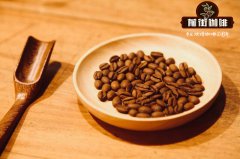How does coffee aroma come from? What is the Mena reaction in coffee roasting?

Professional coffee knowledge exchange more coffee bean information please follow the coffee workshop (Wechat official account cafe_style)
Caramel and Mena reaction
The aroma of coffee comes from the fact that coffee beans themselves store rich precursors of aroma substances, such as carbohydrates, proteins, lipids, organic acids, etc. After being heated and baked, it will initiate a series of complex reactions, creating an attractive aroma. The two important reactions are caramelization (caramelization, oxidation and browning of sugars) and Mena reaction (Maillard reaction, reaction of amino acids with sugars). Both reactions require the participation of sugars, and the rich sugar in raw beans provides the materials needed for these two reactions. Studies have also shown that there is a positive correlation between sucrose content and the aroma of coffee beans. Because the sugar content of Arabica mentioned in the previous paragraph is more than Robusta, it also proves the reason why Arabica coffee beans have a better flavor.
Caramelization and Mena reactions each produce the following aromas:
Caramelization: sweet, sour, bitter, fruity, cream, caramel, nuts
-Mena reaction: salty, floral, nutty, chocolate, potato and earthy
The product of the reaction of caramel with Mena is divided into two parts:
a. The source of dark brown coffee beans-the dehydration product of sugar, which is caramel or sauce.
b. The source of coffee bean aroma-lipid pyrolysis products, mainly some volatile aldehydes, ketones, furans (small molecular odors).
Caramelization: sweet, sour, bitter, fruity, cream, caramel, nuts
Mena reaction: salty, floral, nutty, chocolate, potato and earthy
However, if caramel is too much in the process of baking is not a good thing, but will cause carbonization, making the coffee bitter and dull. In addition, it should be noted that coffee beans are rich in fat, so they are not stored properly. The oxidation and cracking of these fatty acids will produce an unpleasant fuel consumption smell, which will greatly reduce the flavor.
END
Important Notice :
前街咖啡 FrontStreet Coffee has moved to new addredd:
FrontStreet Coffee Address: 315,Donghua East Road,GuangZhou
Tel:020 38364473
- Prev

The growing environment of coffee where can coffee be planted in a suitable coffee growing area
Professional coffee knowledge exchange more coffee bean information Please pay attention to the coffee workshop (Wechat official account cafe_style) Coffee growing reference conditions Coffee growth conditions will reflect the quality of coffee climatic conditions Arabica coffee is not resistant to high temperature and humid climate, can not be in a long-term low temperature below 5 ℃, so more planted in the steep slopes of 1000-2000 Michael land above sea level.
- Next

What is the effect of hand-brewed coffee on coffee extraction
Professional coffee knowledge exchange more coffee bean information Please pay attention to the coffee workshop (Wechat official account cafe_style) the purpose of stirring is to improve the extraction rate of coffee, we are roughly divided into two types: one is to stir with water, the other is to stir the coffee powder bed with foreign objects. Whether through extra utensils or through the flow of water, it's just for a more perfect
Related
- Beginners will see the "Coffee pull flower" guide!
- What is the difference between ice blog purified milk and ordinary milk coffee?
- Why is the Philippines the largest producer of crops in Liberia?
- For coffee extraction, should the fine powder be retained?
- How does extracted espresso fill pressed powder? How much strength does it take to press the powder?
- How to make jasmine cold extract coffee? Is the jasmine + latte good?
- Will this little toy really make the coffee taste better? How does Lily Drip affect coffee extraction?
- Will the action of slapping the filter cup also affect coffee extraction?
- What's the difference between powder-to-water ratio and powder-to-liquid ratio?
- What is the Ethiopian local species? What does it have to do with Heirloom native species?

